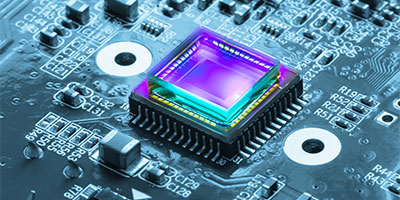 With so many options out there for cameras and embedded vision, it can be overwhelming to put together a solution for your automation system. Choose the wrong camera and you might end up with a device that can’t capture images fast enough or can’t seem to get the subject in focus. The good news is that you’ve come to the right place! Let’s find out how to choose the right camera or sensor for your embedded vision project!
With so many options out there for cameras and embedded vision, it can be overwhelming to put together a solution for your automation system. Choose the wrong camera and you might end up with a device that can’t capture images fast enough or can’t seem to get the subject in focus. The good news is that you’ve come to the right place! Let’s find out how to choose the right camera or sensor for your embedded vision project!
Embedded Vision Needs the Right Camera or Sensor
There are several questions to ask before you select a camera or sensor for your embedded vision project. What needs to be seen, captured, or measured? How would you like your embedded vision system to improve your existing system? How does the vision system need to interact with your automated equipment? What kind of light source is available and what wavelengths do you plan to capture?
Picking the Right Camera or sensor for Your Application
Manufacturers of machine vision cameras offer more options than ever before. We’re going to discuss some of the most common and most important options you’ll need to choose between. For further help, ask the experts at Phase 1 Technology Corp to help you select the right camera or sensor for your application.
Resolution
Pixel resolution translates to how many millimeters each pixel is equal to on the image. The higher the resolution, the sharper your image will be. The camera or sensor’s resolution should allow for at least a three-pixel coverage of a feature’s area.
Color/Monochrome
If your process needs to detect hue, you’ll need a color camera or sensor. If you don’t need color, a monochrome camera or sensor may deliver higher contrast and sharper lines.
Image Transfer Speed
You’ll need a camera or sensor that can capture and process the image fast enough to keep up with your automation need. It’s best to pick a camera or sensor with an imaging rate slightly higher than what is required.
Form Factor
There are often standard and compact sizes available. Be sure to choose a camera or sensor that will fit in the application and is contained in a housing appropriate for the environment.
Connectivity
Several standards are available to choose from depending on the speed required and the distance to the device the camera or sensor must communicate with. If speed is a priority, Camera Link or USB3 Vision might be ideal. GigE Vision goes longer distances but is slower.
If you’re ready to improve your automation with embedded vision, contact the pros at Phase 1 Technology to help you pick the right machine vision camera for your project.
